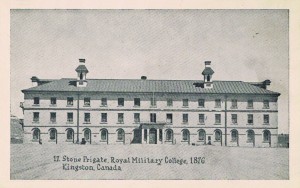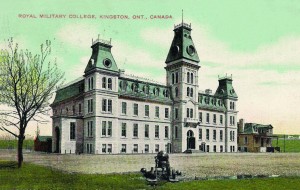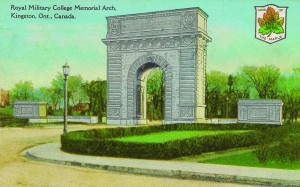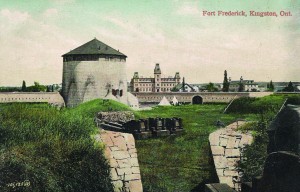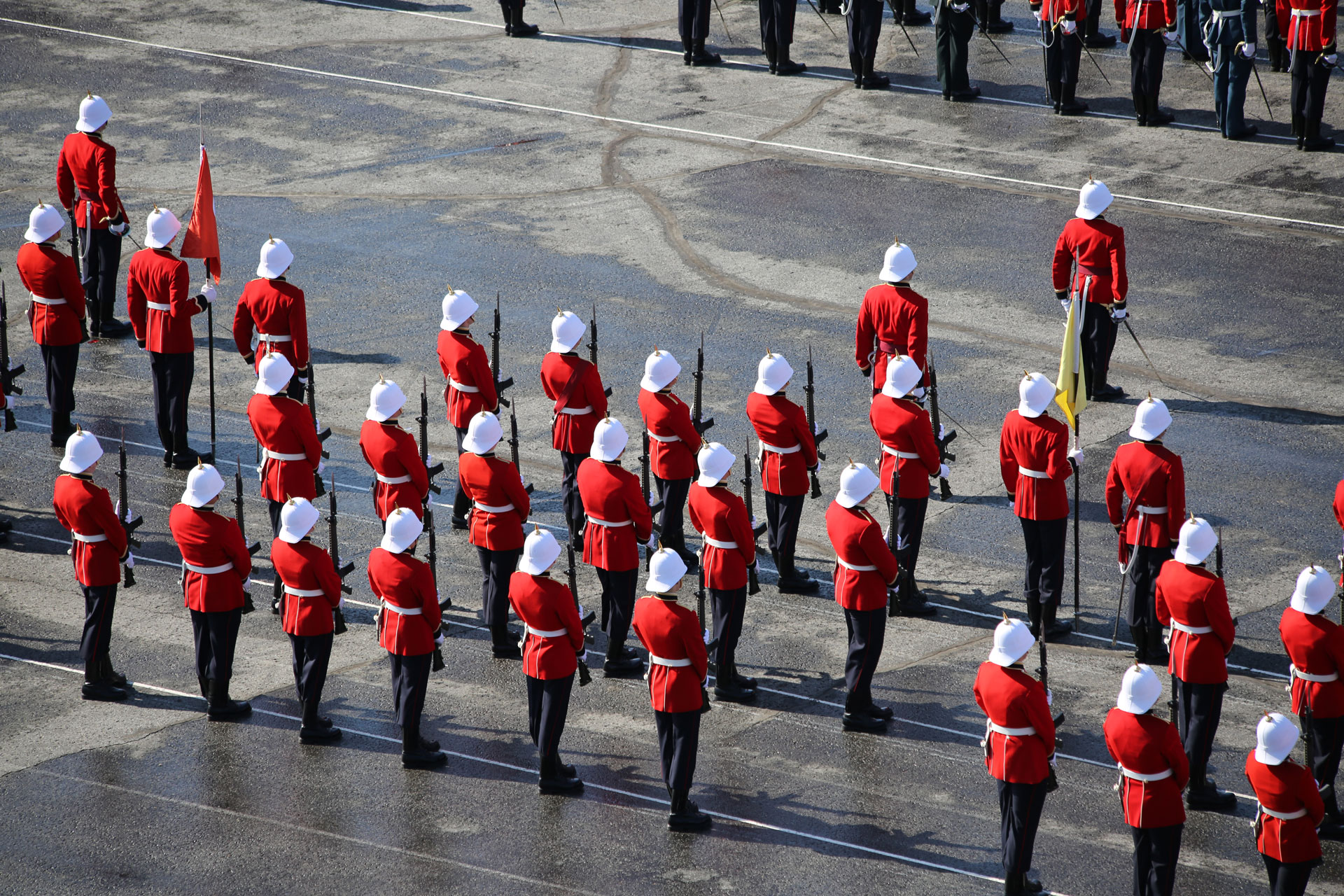
Canada’s RMC – A Brief History in Postcards
By: 11415 Michael Smith (RMC 1977)
The Royal Military College of Canada, commonly referred to as RMC, was established by an Act of Parliament in 1874, which stated that an institution should be set up “for the purpose of imparting a complete education in all branches of military tactics, fortification, engineering and general scientific knowledge in subjects connected with and necessary to a thorough knowledge of the military profession and for qualifying officers for command and staff appointments . . . ” In a nutshell, young Canada needed a facility to train and educate military officers and Kingston, one of Canada’s historic garrison towns, was the chosen site. The fact that the Prime Minister at the time, the Honourable Alexander Mackenzie, once worked as a stone mason on Kingston’s defences no doubt tipped the scale in Kingston’s favour.
That said, several years ago I was invited by Veritas, the magazine of the RMC Club of Canada, to contribute an article on the College based on early postcards of this historic institution. To my embarrassment, I realized that I didn’t have one RMC item in my military postcard collection, and therefore had to decline the invitation. Now that I have a about a dozen RMC cards, I figured it was time to write the article.
RMC opened on 01 June 1876 on Kingston’s Point Frederick peninsula, and was initially established in the Stone Frigate (see Figure 1). The Stone Frigate started life as a naval storehouse built shortly after the War of 1812. Lt.-Col. (later Lt.-Gen.) E.O. Hewitt of the Royal Engineers was the first Commandant of the College, and he commanded a staff of three other officers and one civilian professor. The initial 18 “Gentlemen Cadets” who took up residence in the Stone Frigate on that eventful day are referred to by today’s cadets as the “Old Eighteen.”
The Stone Frigate was Canada’s Military College when it opened in 1876. The “Royal” prefix was granted by Queen Victoria in 1878.
In 1878, the Mackenzie Building was built on the College grounds and all administration, staff, and teaching facilities (classrooms, labs) were relocated from the Stone Frigate to that iconic structure (see Figure 2). The Mackenzie Building is a masterpiece of Georgian-style architecture and is truly worth a look-see if a trip to Kingston is in the offing. The Figure 2 postcard, by the way, was published by Nerlich & Co. of Toronto and mailed to Quebec City on 27 September 1907. The message on the back says that the postcard is part of a series . . . and I have only the one!
The Mackenzie Building is perhaps the most well-known structure at the College.
The Figure 3 postcard shows RMC’s renowned Memorial Arch, which was presented to the College by the RMC Club of Canada in June 1924. The Arch was built to commemorate the ex-cadets who gave their lives in the First World War and earlier conflicts. The inscription on the Arch: “To the Glorious Memory of the Ex-Cadets of the Royal Military College of Canada who gave their lives for the Empire” must be memorized by all first-year cadets and recited out loud as required by more senior cadets. Another custom surrounding the Arch is that it must be saluted by cadets as they pass through it. Saluting memorials, by the way, is a tradition throughout the Canadian Armed Forces.
One of my first screw-ups as a first-year cadet was to forget to salute the Arch. This transgression was unfortunately witnessed by a fourth-year cadet and cost me several laps around RMC’s quarter mile track. (A common punishment handed out to first-year cadets at RMC is “circles,” each of which represents one lap around the track.)
Ed note: “Circles” are no longer handed out as a routine punishment, however, there is a move a foot by the cadet leadership – to implement “circles” once again in the near future.
RMC’s renowned Memorial Arch was erected shortly after the First World War to commemorate fallen ex-cadets.
To say that the College has changed since my graduation in 1977 is an understatement. When I was there, there were about six hundred cadets split into eight different squadrons, and living in four dormitories: Fort Haldimand, Fort Champlain, Fort LaSalle and the Stone Frigate. Today, there are over a thousand cadets split into 14 squadrons, over 600 postgraduates and a brand new dormitory called Fort Sauvé. In addition, the College has been accepting women cadets since the 1980s and is now a completely bilingual institution.
One thing that hasn’t changed, however, is the “lids off” area for cadets at Fort Frederick on the southern tip of the College. Inside the walls surrounding the Martello Tower (see Figure 4), cadets are on equal terms (e.g., no “routine discipline” can be handed out here). This welcome sanctuary from all things military is a great place for beer-ups and corn boils. I remember it fondly!
The Fort Frederick Martello Tower is shown in the foreground of this RMC postcard. The Mackenzie Building and Stone Frigate are in the background.


